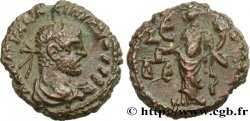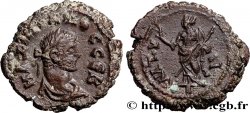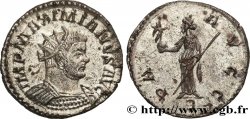v50_0045 - MAXIMIANUS HERCULIUS Argenteus
MONNAIES 50 (2011)
Starting price : 750.00 €
Estimate : 1 200.00 €
unsold lot
Starting price : 750.00 €
Estimate : 1 200.00 €
unsold lot
Type : Argenteus
Date: 294
Mint name / Town : Trèves
Metal : silver
Millesimal fineness : 900 ‰
Diameter : 20 mm
Orientation dies : 12 h.
Weight : 3,12 g.
Rarity : R2
Emission: 1re
Coments on the condition:
Exemplaire de qualité exceptionnelle pour ce type sur un flan large et ovale sur un flan bien centré. Portrait taillé à la serpe avec un nez légèrement en trompette. Revers de style fin et de haut relief. Magnifique patine de médaillier avec des reflets mordorés et bleuté acier. Conserve l’intégralité de son brillant de frappe et de son coupant d’origine
Catalogue references :
Obverse
Obverse legend : MAXIMI-ANVS AVG.
Obverse description : Tête laurée de Maximien Hercule à droite (O*).
Obverse translation : “Maximianus Augustus”, (Maximien auguste).
Reverse
Reverse legend : VICTORIA SARMAT/ -|-// -.
Reverse description : Les Tétrarques, Dioclétien, Maximien, Constance et Galère, debout deux par deux, vêtus militairement, sacrifiant au-dessus d'un trépied allumé, les deux césars en retrait. Ils sont tous les quatre placés devant une enceinte fortifiée, vue en demi-cercle, composée de six tours.
Reverse translation : “Victoria Sarmatica”, (Victoire sur les Sarmates).
Commentary
Rubans de type 2 aux extrémités bouletées. Métal lègèrement cristallisé.








 Report a mistake
Report a mistake Print the page
Print the page Share my selection
Share my selection Ask a question
Ask a question Consign / sell
Consign / sell
 Full data
Full data



